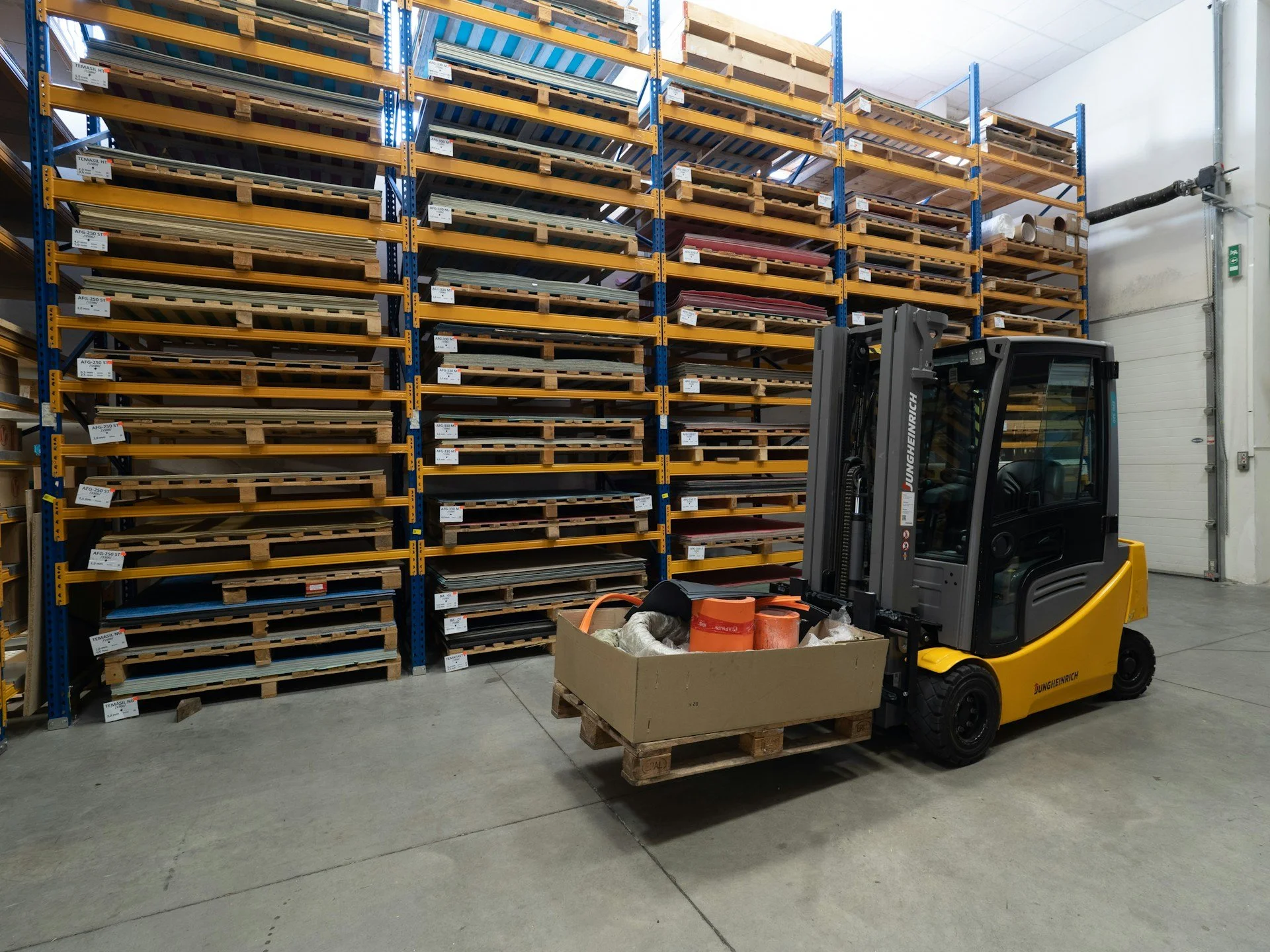What Every Toyota Forklift Dashboard Symbol Means
Toyota Forklift Dashboard Warning Lights
The warning lights on a Toyota Forklift dashboard are designed to alert the operator of an issue with the vehicle that requires attention. To maintain the vehicle’s performance and ensure safe operation, it’s important to take action if you notice warning lights lighting up on the dashboard.
The first step is to make note of what warning lights are appearing, before taking proper steps to resolve the issue. Using the list below, you can figure out what dashboard symbol you’re seeing and what it’s telling you about the Toyota forklift.
The Complete List of Toyota Forklift Dashboard Symbols and Their Meanings
Check Engine Light
What it looks like: An engine block symbol lighting up/flashing. There might also be text that says “CHECK ENGINE”.
The forklift’s computer will trigger the check engine light if it senses something wrong with the engine itself or a component of the engine, such as the sensors. It’s a very general warning which makes it hard to pinpoint the exact issue.
The check engine light could indicate a number of basic to complex engine issues, such as:
An engine malfunction
A faulty sensor
A faulty catalytic converter
Issues with the wiring
A loose gas cap
Find Out What Caused the Check Engine Light
Battery Warning Light
What it looks like: An icon of a battery with a “+” and “-” symbol.
Typically, the battery warning light is an alert to the operator forklift’s battery charge is low and might run out of power soon. However, it might also indicate another problem with the battery, such as a faulty charging circuit or an old battery.
How to Fix Battery Warning Light on Toyota Forklift
The easiest solution is to recharge the battery as soon as possible.
If the battery warning light continues to appear after a reset, there’s likely a deeper issue. Find out how to diagnose complex Toyota forklift battery issues here.
Oil Pressure Warning Light
What it looks like: An oil canister.
The oil pressure warning light is mainly a sign of low oil pressure. It could also mean that the oil filter is clogged, the oil pump has failed, or the pressure sensor is malfunctioning.
How to Fix Oil Pressure Warning Light on Toyota Forklift
Start by checking the oil level. If the levels are low, top it off with the correct type of oil and see if the warning light continues to appear. If the oil levels are fine, but the oil is dirty or old, an oil change might be required. If the issue persists, you should scan the forklift with a diagnostic scanner.
Hydraulic Oil Warning Light
What it looks like: A drop of oil and/or cylinder symbol.
The hydraulic oil warning light usually comes on when oil levels are too low in the forklift’s hydraulic system. It could be caused by issues with the oil itself, such as contamination, or a pump or sensor issue. A blockage in the hydraulic filter may also trigger the hydraulic oil warning symbol.
Find Out How to Diagnose the Hydraulic Oil Warning Light
Air Filter Warning Light
What it looks like: An icon of an air filter or a cloud/puff of air symbol.
The air filter warning light warns you about air filtration issues, most commonly when the air filter is clogged, dirty, or blocked. But the air filter warning light can come on for other reasons, such as when the air filter is improperly installed, or the air filter sensors are malfunctioning.
How to Fix Air Filter Warning Light on a Toyota Forklift
In most cases, checking the air filter, cleaning, and replacing it if clogged will solve the issue and make the warning light turn off. Regular maintenance and cleaning of the air filter can help prevent the light coming on in the future.
If the air filter warning symbol continues to light up, there are likely deeper issues with the air filtration system. Click here and find out how to pinpoint complex air filter issues.
Temperature Warning Light
What it looks like: An engine symbol with a thermometer or a water droplet in the icon.
The temperature warning light comes on when the forklift’s engine gets too hot. You should stop operating the forklift and turn off the engine to prevent overheating. Overheating can cause irreversible damage to the engine.
There are numerous reasons the engine could be overheating. Some common reasons for the temperature warning light include low coolant levels, a coolant leak, or a problem with the radiator.
How to Fix Temperature Warning Light on Toyota Forklift
Turn off the engine to let it cool and check the coolant levels.
Top up if necessary with the recommended type of coolant.
If coolant levels are consistently low, check for leaks.
If this doesn’t solve the issue, there may be deeper problems with the cooling system that need to be diagnosed with a diagnostic scanner.
Brake Warning Light
What it looks like: a circle with an exclamation mark inside or an icon of a brake.
The brake warning light comes on when there’s a problem with the braking system that needs immediate attention. The most common reason for the brake warning symbol is the brake fluid levels being too low, but worn brake pads or faulty components can also cause it.
Issues with the brake system can be very dangerous. If this warning light appears, stop using the forklift as soon as possible.
How to Fix Brake Warning Light on Toyota Forklift
Check the fluid levels and top it up if needed.
Another common mishap that could be causing the brake warning light is the parking brake. If the parking brake is engaged, release it and see if that makes the warning light stop appearing.
If the brake warning light continues to appear, use a diagnostic scanner to find out what the real issue is.
Transmission Warning Light
What it looks like: small gearbox or transmission with an exclamation mark.
The transmission warning light comes on when the system detects a problem with the transmission causing it to not operate as expected. The most common cause is that the transmission fluid levels are low or have been contaminated. If not, the transmission components could be faulty and causing it to fail. Overheating is also known to trigger the transmission warning light.
How to Fix Transmission Warning Light on Toyota Forklift
Inspect the transmission fluid for any loose debris or other contaminants to ensure it’s clean. If fluid levels are low, top it off with the same transmission fluid. Inspect for any leaks that may be causing you to lose more fluid.
If transmission fluid is clean, levels are normal, and there are no leaks, inspect the cooling system and make sure there’s proper ventilation to prevent overheating.
Tilt Warning Light
What it looks like: Icon of a forklift mast or forklift carriage in a tilted position.
The tilt warning light may be warning you of a component that isn’t locked in place and could tilt. It’s important to stop lifting and transporting loads with the Toyota forklift until the issue is resolved, as continuing to operate could be unsafe.
The tilt warning light is usually caused by the mast being tilted too far in one direction or being overloaded, affecting its stability when carrying large loads. However, it can also be caused by an issue with the mast or hydraulic system making the tilt not respond properly. The tilt angle and lock mechanism might also malfunction and trigger the tilt warning light.
How to Fix Tilt Warning Light on Toyota Forklift
Correct the forklift’s position to ensure the forks are level and that the mast isn't tilted excessively. If your model has the auto-leveling feature, ensure that it is working properly.
If hydraulic fluid is low, top it up. Low fluid levels can cause jerky or inaccurate movements. Check if there is a leak or blockage making hydraulic fluid levels low.
Check the forklift’s capacity for load handling. If it’s over-capacity, lower the load or redistribute the weight to reduce strain.
Inspect the tilt sensor and tilt lock mechanism for damage, as they could be triggering false warnings.
If you want to know the exact cause, scan the forklift with a diagnostic tool.
Seatbelt Warning Light
What it looks like: seatbelt buckle or a person with a seatbelt on.
Typically, the seatbelt warning light is triggered when the operator hasn’t put their seatbelt on. It will continue to light up until the seatbelt has been buckled. If your seatbelt is buckled, there might be a problem with the seatbelt’s buckle or a malfunctioning seatbelt sensor.
How to Fix Seatbelt Warning Light on Toyota Forklift
Ensure the seatbelt is properly buckled and secure before operating.
If the seatbelt has frays, cuts, or is damaged in some way, the seatbelt needs to be replaced.
Inspect the wiring connections around the seatbelt sensor for any signs of damage that could cause a false warning light.
If the light continues to show up, use a diagnostic tool to identify larger issues.
A Diagnostic Tool for Reading Toyota Forklift Error Codes
Jaltest is one of the most advanced diagnostic tools in Canada, equipped with dealer-level capabilities for easy diagnosis and troubleshooting. What sets it apart from other tools is its multi-brand capabilities, making it the perfect choice for not just Toyota forklifts, but also CAT, Bobcat, and more industry-leading material handling equipment manufacturers.
Using Jaltest can save you significant time and money by reducing downtime and guesswork in repairs. The software includes troubleshooting guides to facilitate repairs and make the process simple and easy. No more endless trial and error, with Jaltest, you can get to the bottom of the issue and fix it — all within the same day.
If you’re the fleet manager of a multi-brand fleet, there’s no better choice than Jaltest. Figure out what’s wrong with your Toyota forklift.

